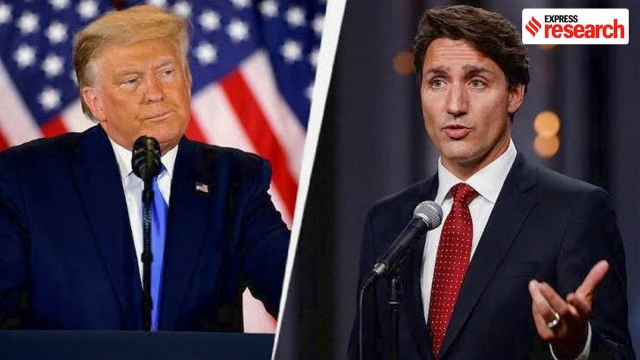In discussions about Canada potentially joining the US, President-elect Donald Trump has raised the topic. Looking back at history, it is evident that America displayed imperialistic tendencies in its early years, with instances of threatening to invade Canada on multiple occasions

In December of the previous year, President-elect Donald Trump proposed the idea of Canada becoming a part of the United States. He later referred to the then-Canadian Prime Minister Justin Trudeau as a ‘governor.’ On December 18, Trump took to his social media platform Truth Social to suggest that Canada should be the 51st state of America. He questioned the substantial annual subsidy to Canada and claimed that many Canadians were in favor of Canada becoming the 51st State. In January of the current year, Trump and his supporters continued discussions about Canada potentially joining the US. During a press conference on January 7, he dismissed the use of military force for annexation but mentioned the possibility of employing “economic force” instead.
The Panama Canal: Trump’s bold claims and the history behind the waterway
The proposals put forth by Trump have faced strong criticism from Canada, with Trudeau firmly stating that the likelihood of Canada becoming the 51st state of America is extremely slim. Despite this, when examining the early history of the United States and past Canadian annexation movements, the idea of territorial expansion does not appear entirely far-fetched.
Territorial expansion of the US
Donald Trump is advocating using economic pressure to annex Canada as part of the United States
In December last year, US President-elect Donald Trump suggested that Canada become a part of the United States. He later referred to now-resigned Canadian Prime Minister Justin Trudeau as a ‘governor.’ Again, on December 18, Trump suggested on his social media platform Truth Social that Canada should become the 51st state of America. “No one can answer why we subsidize Canada to the tune of over $100,000,000 a year? Makes no sense! Many Canadians want Canada to become the 51st State,” he wrote.
In January this year, Trump and his supporters continued talks of Canada joining the US. In a January 7 press conference, he ruled out the use of military force to annex Canada but said that he would use “economic force” instead.
Also read | The Panama Canal: Trump’s bold claims and the history behind the waterway
Trump’s proposals have been widely decried by America’s northern neighbour with Trudeau stating that there wasn’t “a snowball’s chance in hell” of Canada becoming America’s 51st state. However, looking at the early history of the United States, and certain Canadian annexation movements, territorial expansion does not seem outside the realm of possibility.
Advertisement
Territorial expansion of the US
The formation of the United States of America occurred in 1776 when 13 British colonies declared independence from the British Empire. The country’s initial significant expansion took place in 1803 with the acquisition of Louisiana from the French, effectively doubling its territory. Subsequent disputes along the southeastern border culminated in the Mexican-American War in 1845. Following a successful outcome, the US gained control of the northern half of Mexico, which encompassed present-day California.